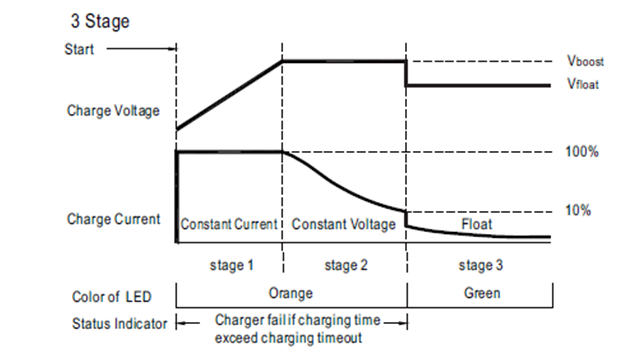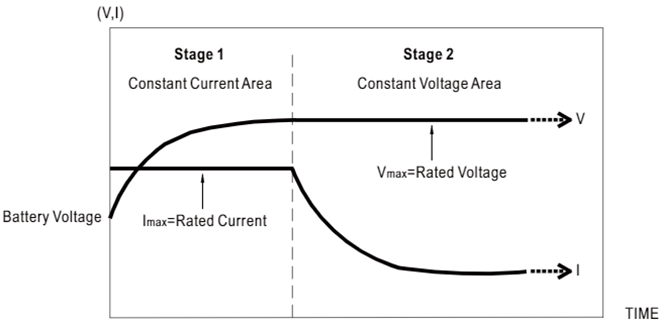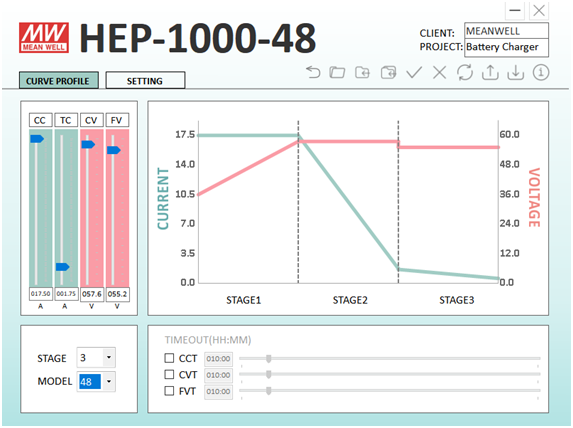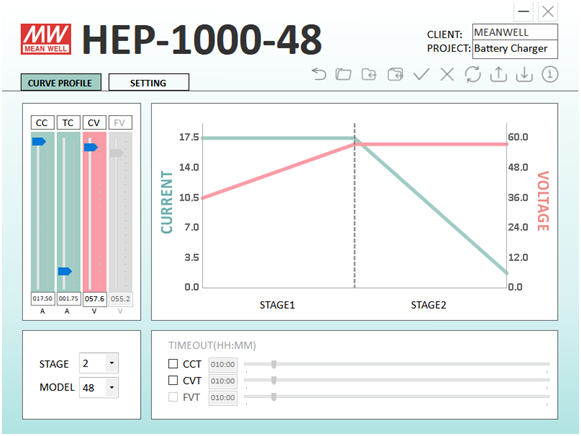Programmable Battery Charger for Lead-Acid and Lithium Batteries
By: Anke Ge/Technical Service Center
anke.ge@meanwellusa.com
Introduction
Battery, as one of the easiest accessible energy storage solutions, has been gaining popularity in recent years. Nowadays, batteries not only can be used in personal electronics, cars, and uninterrupted power supply (UPS) systems but also in electrical vehicles and renewable energy storage. However, different characteristics of different battery types post technical challenges for consumers and even engineers to select batteries and chargers. This article will discuss the differences between two of the most popular battery types: Lead Acid and lithium battery as well as how to select a suitable charger.
Characteristics of Lead Acid and Lithium Batteries
Lead-Acid batteries as one of the most popular battery chemistry types had a long history. Some of the advantages are high tolerance of charging voltage, high surge current capability, wide operating temperature, and low price. It is often found in motive applications such as cars and forklifts as well as back-ups systems. The drawbacks of Lead-acid batteries are the high self-discharging rate and relatively short charge/discharge cycles; hence it is not suitable for energy storage applications.
Contrary to lead-acid, the high charging/discharging rate, low self-discharge rate, and high energy density of lithium batteries make it a better candidate for storing energy for a longer-term. Depending on the metal used on the cathode of lithium batteries, there are a variety of lithium batteries with different performances. Lithium cobalt oxide (LCO) has a high energy density and is popular in personal electronics. Lithium iron phosphate (LiFePO4) has a longer lifetime and relatively good thermal stability making it a better option for energy storage solutions. The limitation of lithium batteries is that thermal runaway could cause the battery to catch on fire. Therefore, lithium batteries require more deliberate charging/discharging.
Battery Charging Algorithm
The nominal voltage of a single lead-acid cell is about 1.8-2.3V with recommended max charging current of 0.3C. Most commercialized batteries have many cells in series and parallel to form a large capacity battery at more practical voltages like 12V, 24V, and 48V. Note the ‘12V’, ‘24V, or ‘48V’ is often used loosely as an indication of the voltage range. The actual voltage would constantly change based on the remaining capacity. For example, the open-circuit voltage of a typical ‘12V’ AGM lead-acid battery is between 10.8V (30% battery capacity) to 13.8V(100% capacity).
Because of the high self-dissipation rate of lead-acid batteries, the 3-stage charging method is often recommended. A typical charging cycle starts at the constant current stage (‘stage 1’ of Figure 1) which the charger limits its output current to its max rating and slowly increases its output voltage. Once the battery voltage reaches the max charging voltage, the charger would switch to a constant voltage stage (‘stage 2’ of Figure 1). The charger starts outputting its max rated voltage constantly and monitoring its output current. Finally, the charger changes to the floating charging stage (‘stage 3’ of Figure 1) after the charging current drop below about 10% of the rated current. At this stage, the charger would lower its output voltage to avoid overcharging. Although the battery at this point is close to being fully charged, it would still constantly draw power from the charger to compensate for its self-dissipation.

Figure 1. 3-stage Charging Curve
Lithium batteries could have nominal voltages from 3.2V to 4.4V with a max charging current up to 1C. Even the same chemistry variant of lithium batteries but from different manufacturers could have different rated voltage and charging current. Unlike Lead Acid batteries, lithium batteries do not tolerate high charging voltage and do not require floating charging to maintain their state of charge. Therefore, lithium batteries are often charged with a 2-stage charging method (Figure 2) without the floating charging stage.

Figure 2. 2-stage Charging Curve
Cell imbalance is a concern for a large lithium battery bank. Due to the manufacturing tolerances, equivalent series resistance (ESR) of lithium cells cannot be matched perfectly. The differences among cells cause cells in the same bank could be charged at a different voltage or current. The cells with low ESR will always be fully charged/discharged first, so those cells will age and fail faster. The imbalance of cells not only shortens the lifetime of the battery but also could potentially cause thermal runaway and become a safety hazard. To solve this issue, large lithium battery banks should always be equipped with battery management systems (BMS). The basic function of BMS is monitoring the state of charge and balancing cells either passively or actively. The passive BMS balances cells by discharging the fuller cells using power resistors. It is robust and relatively easy to design, but not efficient and less effective. On the other hand, the active BMS charges cells individually to matches the states of charge. Because active BMS has charging control for each cell, some lithium battery bank with active balancing BMS only require constant voltage AC/DC power supplies as the charger
MEAN WELL Smart Battery Charging Solution
As mentioned above, batteries of different chemistry and from different manufacturers could have different characteristics. It is also recommended (mandatory for Lithium batteries) to have the charging curve optimized for batteries to ensure reliability, longevity, and safety. MEAN WELL programmable chargers with the smart charger programmer SBP-001 offers flexibility and a user-friendly interface for adjusting the charging curve.
Using the recently released HEP-1000 series as an example. The default setting of HEP-1000-48 is a 48V and max 1008W constant voltage power supply. Users can connect HEP-1000-48 with MEAN WELL smart charger programmer SBP-001 and enable the charger mode. The default charging curve is a 3-stage (Figure 3) for typical sealed lead-acid batteries with a 57.6V boost charging voltage and 55.2V floating charging voltage. The charging voltage and current can be easily adjusted to 36~60V and 3.5~17.5A respectively for other types of lead-acid batteries

By simply selecting the 2-stage charging mode, HEP-1000 also can be used for charging lithium batteries with the same adjustment range. For charging a 20Ah LiFePO4 battery with a max charge voltage of 56V, the ‘CV’ and ‘CC’ option shown in Figure4 can be set to 56V and 17.5A for fastest charging. The user could also lower the charging current to prevent high current caused temperature rise and lower voltage to avoid the possibility of overcharging.

Figure 4. Smart Charging Program (HEP-1000-48, 2-stage Charging)
Conclusion
In conclusion, MEAN WELL programmable chargers can be used to accommodate the customization of charging curves required by either lead-acid or lithium batteries. Adjusting the charging voltage and current based on the temperature and age of the battery could also preserve the battery and optimize its capacity.
